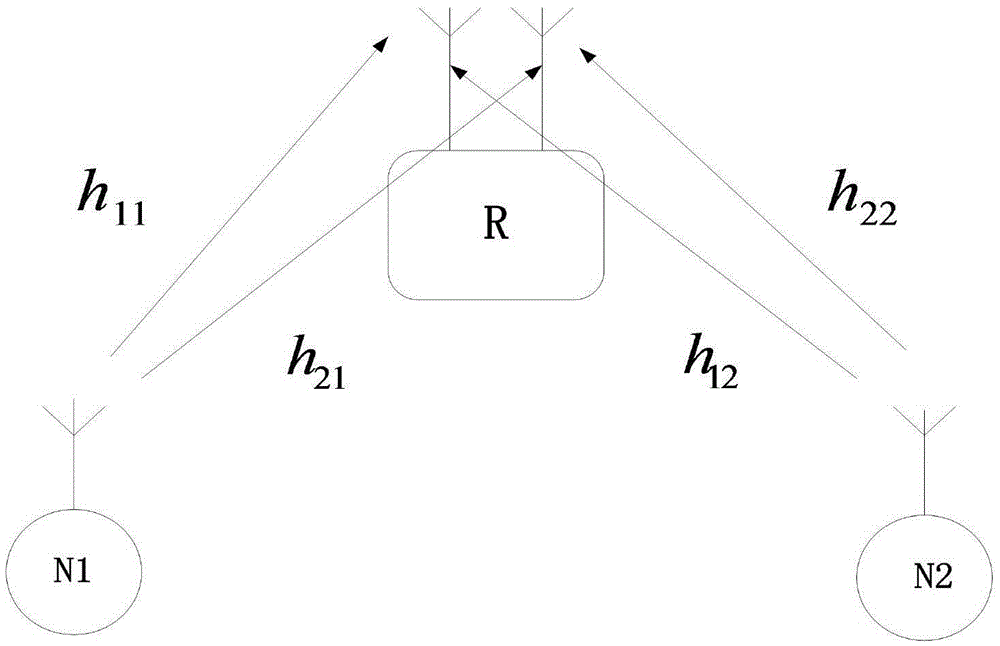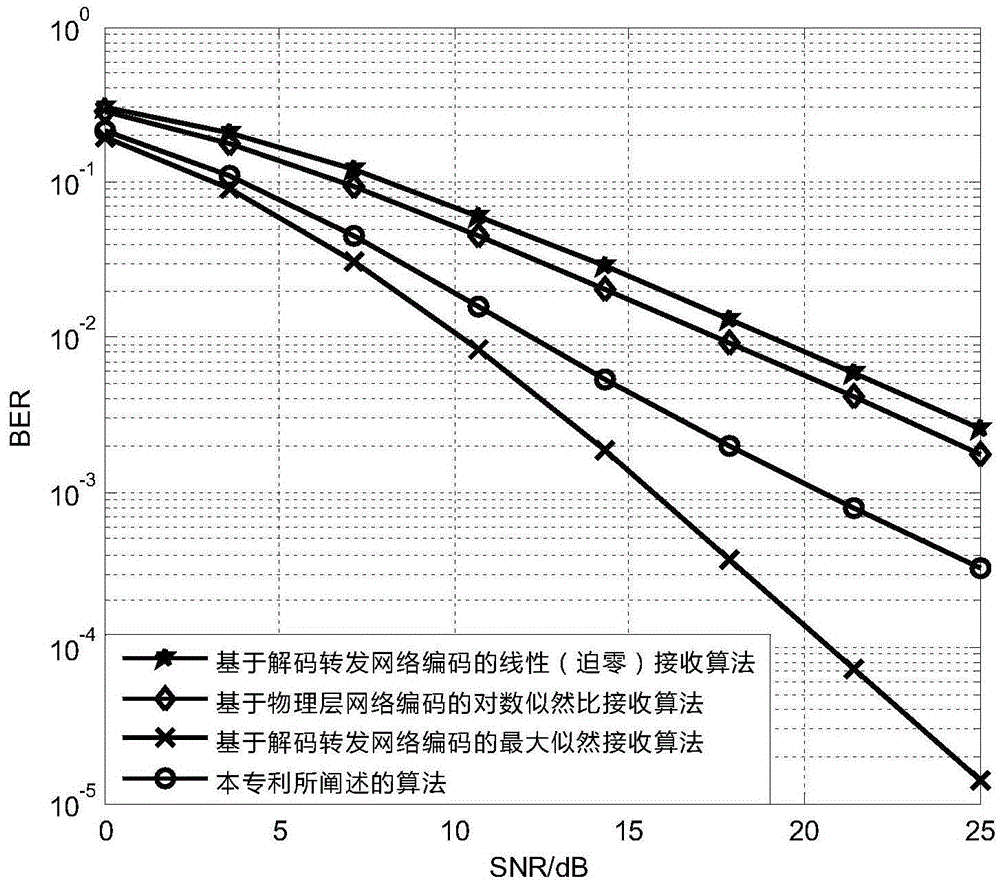Multi-antenna two-way relay evidence theory receiving method based on decode-and-forward network coding
A two-way relay, evidence theory technology, applied in the research field of cooperative communication and signal processing of multiple input multiple output system, can solve the problem of bit error performance gap and so on
- Summary
- Abstract
- Description
- Claims
- Application Information
AI Technical Summary
Problems solved by technology
Method used
Image
Examples
Embodiment Construction
[0064] The algorithm of the present invention will be further described below in conjunction with the accompanying drawings and embodiments.
[0065] The method flow chart described in the present invention is as figure 1 shown, including the following steps:
[0066] Step 1, establish a multi-antenna two-way relay system model without direct link.
[0067] Create a network consisting of two single-antenna users and one containing n R = Two-way relays with 2 antennas form an uncoded equivalent virtual MIMO model such as figure 2 shown. This model can be expressed as: y=Hx+n. The elements of the channel matrix H are modeled as independent and identically distributed complex Gaussian random variables with a mean of 0 and a variance of 1; the transmission vector x is obtained by BPSK or QPSK modulation of a randomly generated 0 and 1 bit stream, and the energy of the transmitting antenna is normalized to One becomes 1. The complex white Gaussian noise vector n has a mean o...
PUM
 Login to View More
Login to View More Abstract
Description
Claims
Application Information
 Login to View More
Login to View More - R&D
- Intellectual Property
- Life Sciences
- Materials
- Tech Scout
- Unparalleled Data Quality
- Higher Quality Content
- 60% Fewer Hallucinations
Browse by: Latest US Patents, China's latest patents, Technical Efficacy Thesaurus, Application Domain, Technology Topic, Popular Technical Reports.
© 2025 PatSnap. All rights reserved.Legal|Privacy policy|Modern Slavery Act Transparency Statement|Sitemap|About US| Contact US: help@patsnap.com



